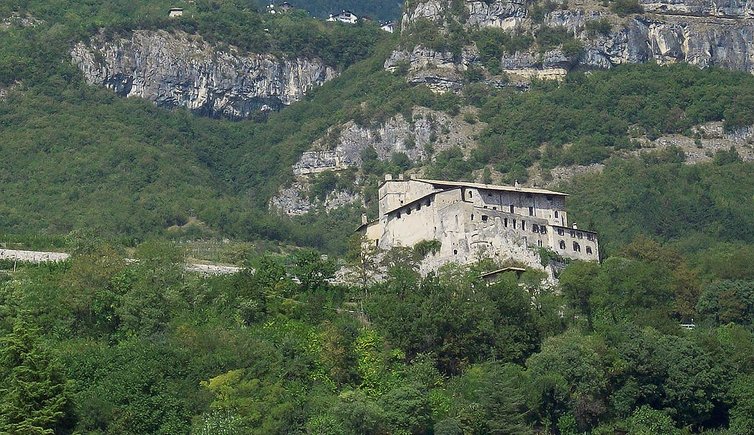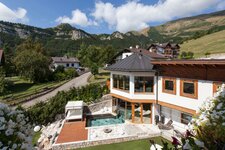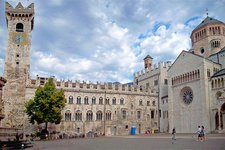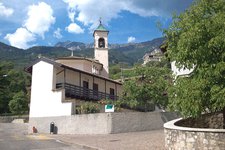Castel Noarna overlooks the Vallagarina since the 11th century
Image gallery: Castel Noarna
Castel Noarna, also known as Castelnuovo, is situated in the eponymous hamlet of the municipality of Nogaredo and was probably a Roman fortress. Its keep, fortifications and Guelph battlements date back to the 13th century. The wooden drawbridge at the entrance of the castle was controlled from the watchtower. In the courtyard there are the keep, two guard rooms and some prisons where women accused of witchcraft were imprisoned during the famous witchcraft process of Nogaredo (1646-1647).
Until the 13th century, the castle belonged to the Castelnuovo family, then it was passed to the Castelbarcos and finally to the Lodrons who restored and converted it into a noble residence decorated with frescoes. On this occasion new residential parts and the Chapel of S. Ruperto were added. The latter is a baroque masterpiece by architect Solari and houses also an altarpiece from 1580 which depicts the Coronation of Virgin Mary with the Saints Nicholas and Franziskus. Also the wooden loggia and the Hall of Honour, a partial pictorial copy of Michelangelo's vault, are definitely worth mentioning. By the end of the 19th century, the Lodrons moved away from the castle and used it as a summer residence for some years, before abandoning it completely. Today, the castle hosts a renowned winery with about 35,000 bottles of wine.
Contact info
- via Castelnuovo, 19 - 38060 - Nogaredo (TN)
- +39 335 5988958
- info@castelnoarna.com
More information
The castle is currently closed. At the moment it is not possible to visit the castle and the wine cellar.




























































